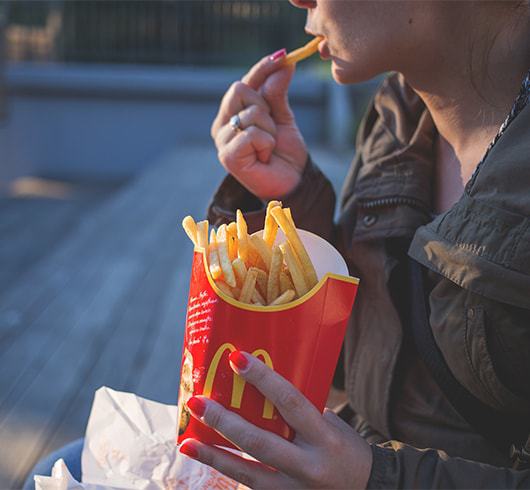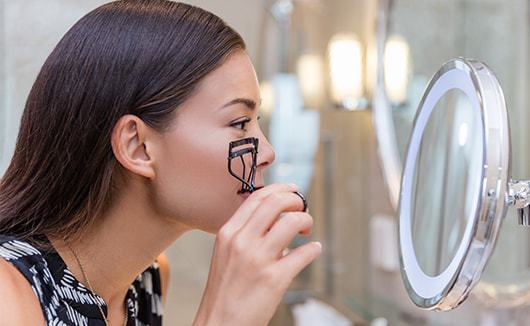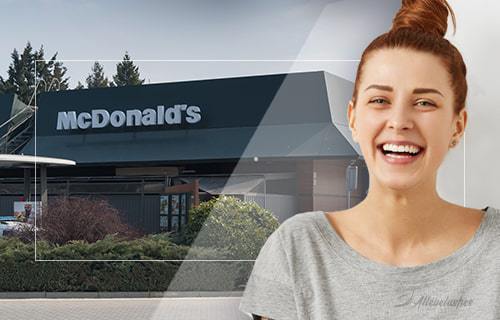
In the United States, there are strict standards for food preparation and presentation. Safety procedures are often rigorously taught to all levels within an organization involved in food services or delivery. To that end, retail food establishments strive to keep abreast of these changing regulations.
Many of these regulations include how workers that prepare or cook food can dress and adornments they can and cannot wear. In restaurants across the U.S., for example, it is not uncommon to see food industry workers wearing hairnets or hats. Hair coverings are often necessary to keep loose hairs from falling into food items and causing illness.
At McDonald’s, for example, according to a new employee manual, workers cannot wear goatees as the hair may fall into the food. Furthermore, McDonald’s has other codes. According to the same manual, employees cannot wear facial rings, and chewing gum is also not allowed.
When it comes to false eyelashes, this area becomes a bit tricky. For the most part, most McDonald’s restaurants adhere to an overall code and standard of dress and conduct. However, many of these rules and regulations are relaxed or disappear in restaurants that are franchised. Much of this is due to the nature of the industry.
A McDonald’s restaurant is either owned by its corporate headquarters or by an individual operating in the organizational capacity. If it is the latter, each owner can set some of their own rules for how employees should dress and conduct themselves while on duty.

What Are False Lashes?
False lashes can describe two things: False eyelashes and extensions. False lashes come in three varieties: Synthetic, human, and mink. Synthetic and human lashes are widely considered cruelty-free options.
False lashes are affixed to the lids using an adhesive. The lash works to keep the lashes on the lid and is generally gentle enough to the surrounding skin. Once the lashes have fully adhered to the eyelid, the process is complete. False lashes last between a few hours and an entire day after application. If the lashes are not correctly attached, there is a risk of them falling off.
Extensions, on the other hand, are either synthetic, silk, or mink. A technician at a licensed spa or salon applies the lashes onto the natural lash. The lash adheres with specialized lash glue. This method is often longer-lasting than regular falsies. Extensions can last for weeks with proper care and maintenance. They begin to shed and fall out after about six weeks.
Food Safety
When it comes to food safety, contamination prevention is critical. Government agencies like the FDA provide guidelines for companies like McDonald’s to follow. Many of these guidelines contain ways to keep hair out foodstuffs. After all, it’s not just stomach-churning to think of hair in food, but it is a safety hazard. If a customer consumes hair, it can cause a host of issues.
The hairs can cause choking, nausea, or vomiting. Hairs, including lashes, contain pathogens and microorganisms like mites. Hair is the most common contaminant in comestibles, and in fast-paced industries like foodservice, this is a grave concern.
McDonald’s has quality centers dedicated to teaching corporate-run facilities and owners about food safety and preparation. Management at McDonald’s doesn’t explicitly state that they are against the wearing of falsies.
However, depending on where an employee works, there could be a contamination issue. For instance, working near a hot vat of grease could loosen the adhesive holding the lashes in place.
Loosely attached lashes could potentially fall into the food, contaminating it. Food can also be contaminated at any stage of preparation by loose lashes. Contamination may occur while wrapping up an order, placing it in bags, and even being near the food as it is being handled.
Natural lashes fall off on their own. This is a natural process of shedding. However, in a healthy person, it doesn’t happen consistently, and it doesn’t occur in large numbers.
A set of lashes falling into say, someone’s oatmeal or soup could be more of a concern than a small hair. While it isn’t advisable to have any contaminants in food, it is not always avoidable. With that said, minimizing risk is vital.
Tips and Tricks
If you are working at a McDonald’s that isn’t against falsies, here are some basic practices:
- Invest in an excellent adhesive: Adhesives appear to be a dime a dozen. There are so many out there that it can be hard to choose. However, there are a few things to watch out for.
- Find a long-lasting, latex-free option: This will minimize allergies and discomfort. You won’t be tempted to rub your eyes and possibly dislodge your lashes.
Our pick: Duo Latex Free Adhesive - Keep your lashes clean: Keep your lashes clean after each wear. You can use a gentle makeup remover on a cotton swab to clean them. Swipe from root to tip to dissolve old glue and dirt. Clean with warm water and cotton swabs to remove any remaining debris. Proper cleaning can ensure that your lashes will take to your adhesive better and stay on longer.
- Store your lashes in a cool, dry place: Proper storage is crucial for not only the life of your lashes but adequate fit. Lashes that are free of dust, mold, and out of direct sunlight will affix much better. This can head off any possible contamination of food.
- Go to a licensed spa. If you opt for eyelash extensions, find a reputable spa that uses high-quality products. Check reviews online and do your due diligence. A great lash install will serve you well and may not end up in a customer’s lunch.
Final Thoughts on Falsies at Work
Beauty is a worthwhile endeavor. However, keep in mind that fast food employees are responsible for the safety of the people they serve. Ensuring that contaminants don’t get into food is the first step. It is also essential to observe good lash hygiene. Keeping your lashes well-maintained may help to keep them from falling off.
Check with your location to see what the guidelines are. While some McDonald’s facilities may not bar falsies, it is always better to check and be sure. Talking with management may also prevent any unnecessary misunderstandings. It may also provide a chance to lay the groundwork for future standards of operation.









